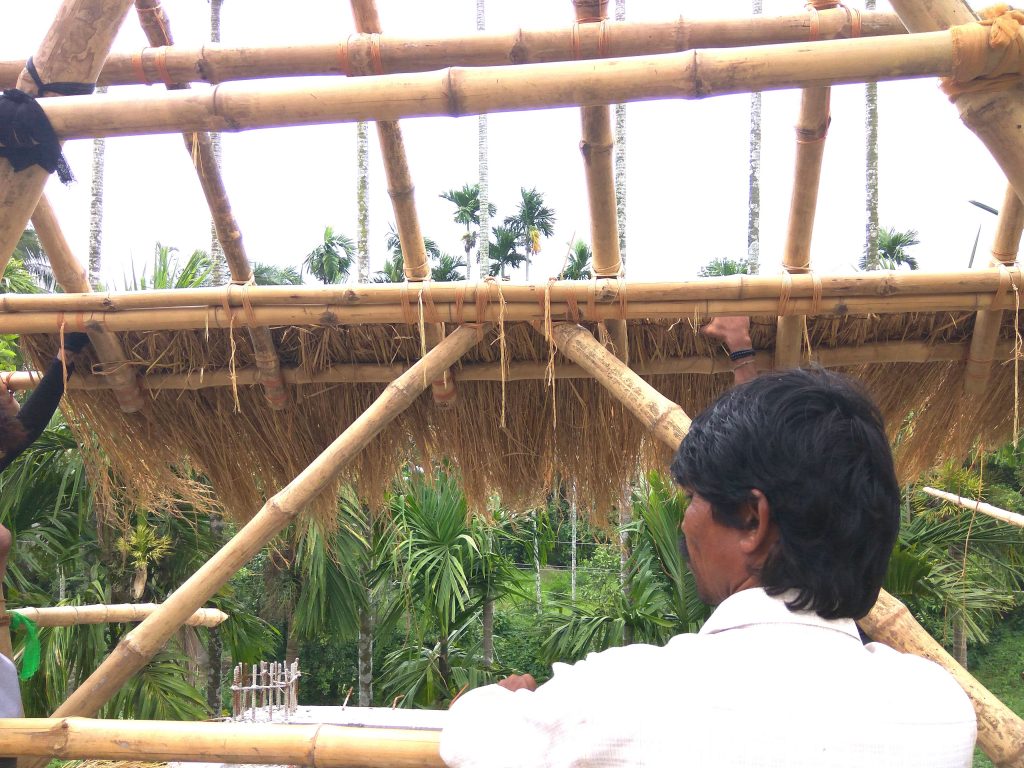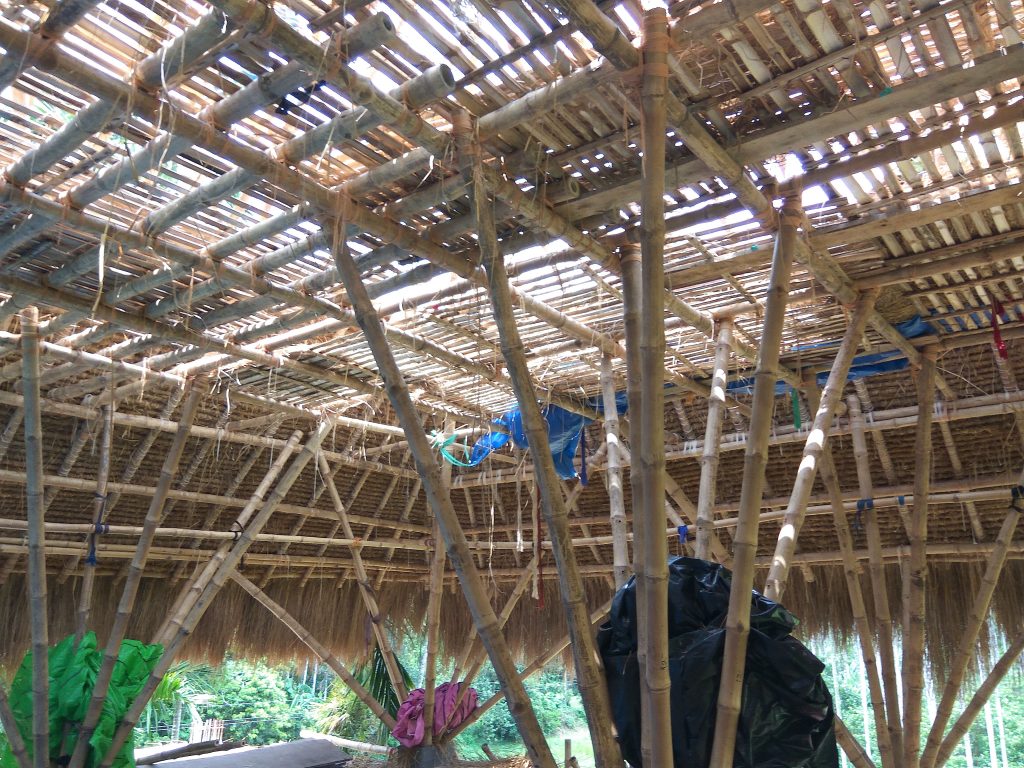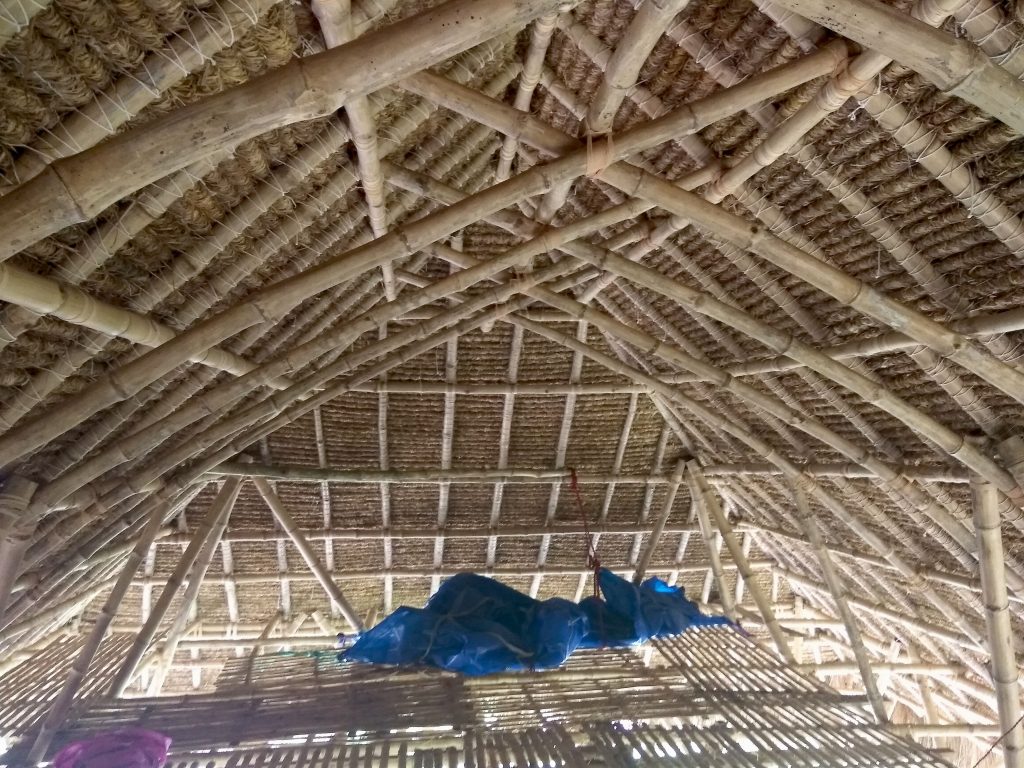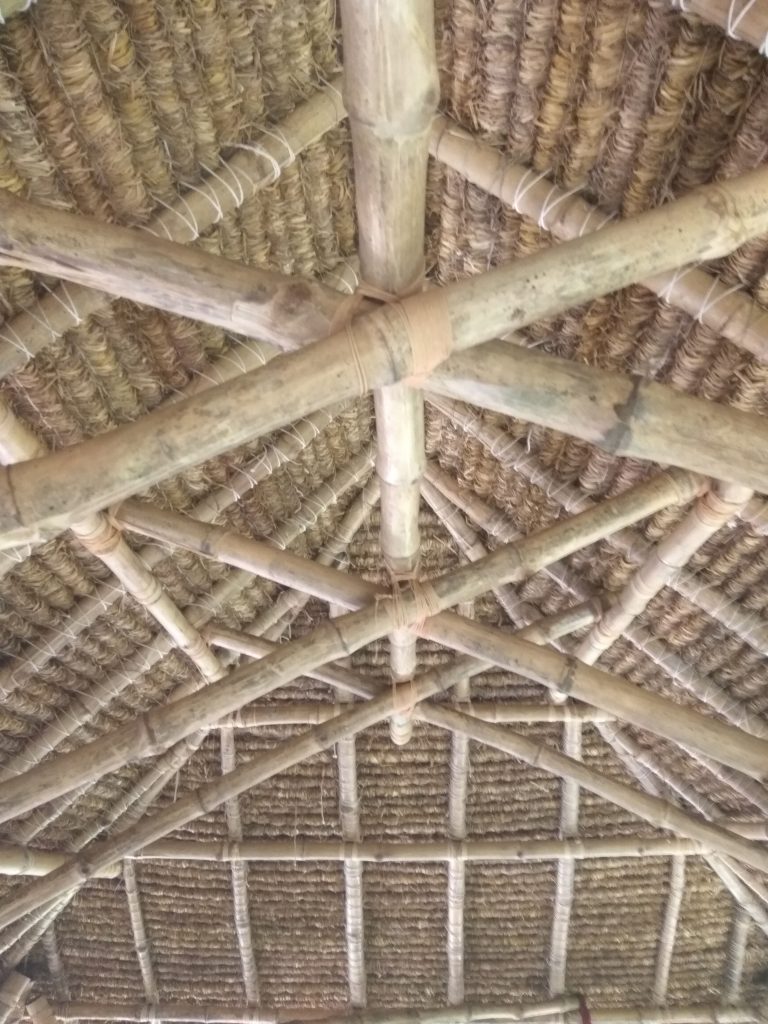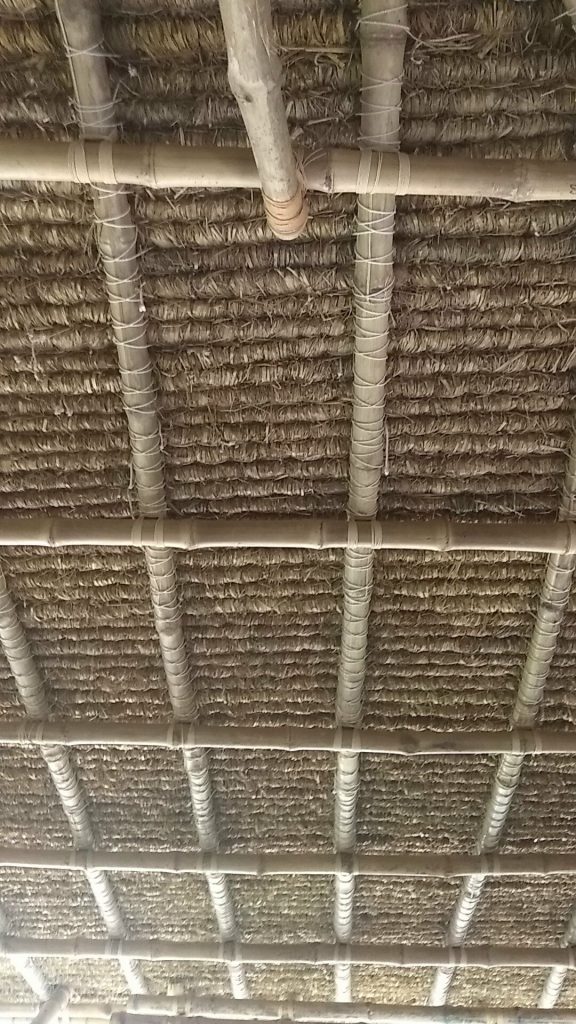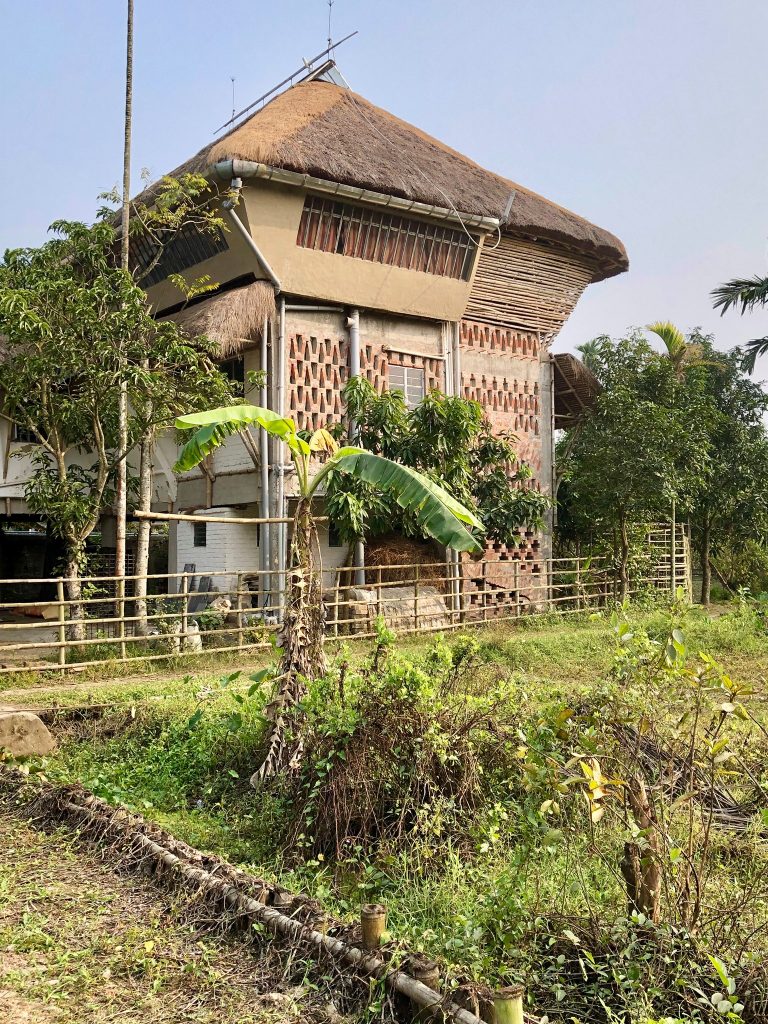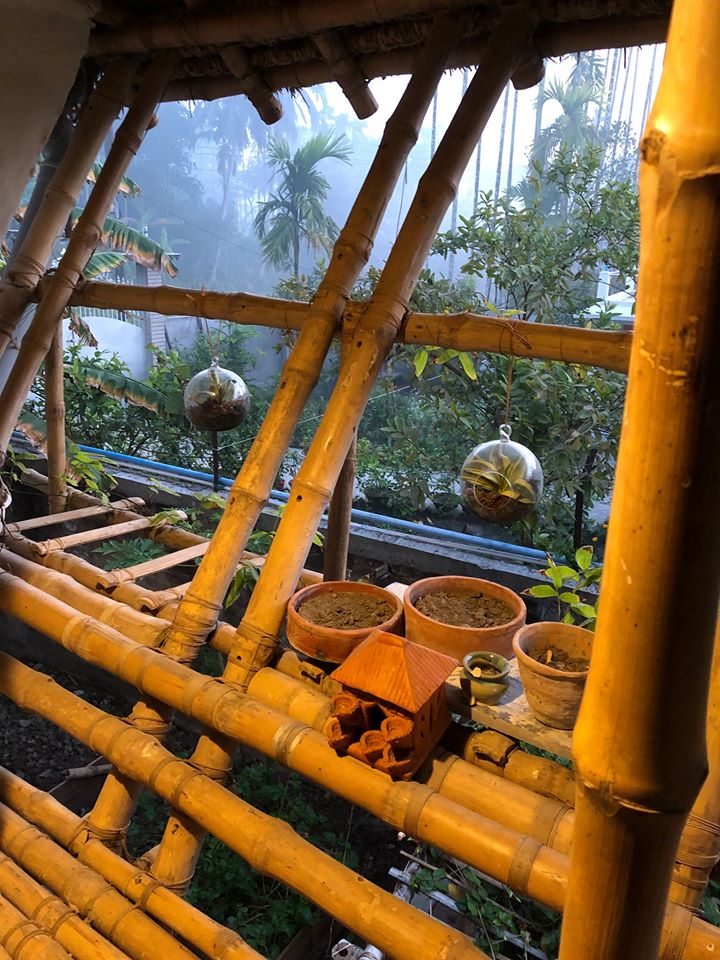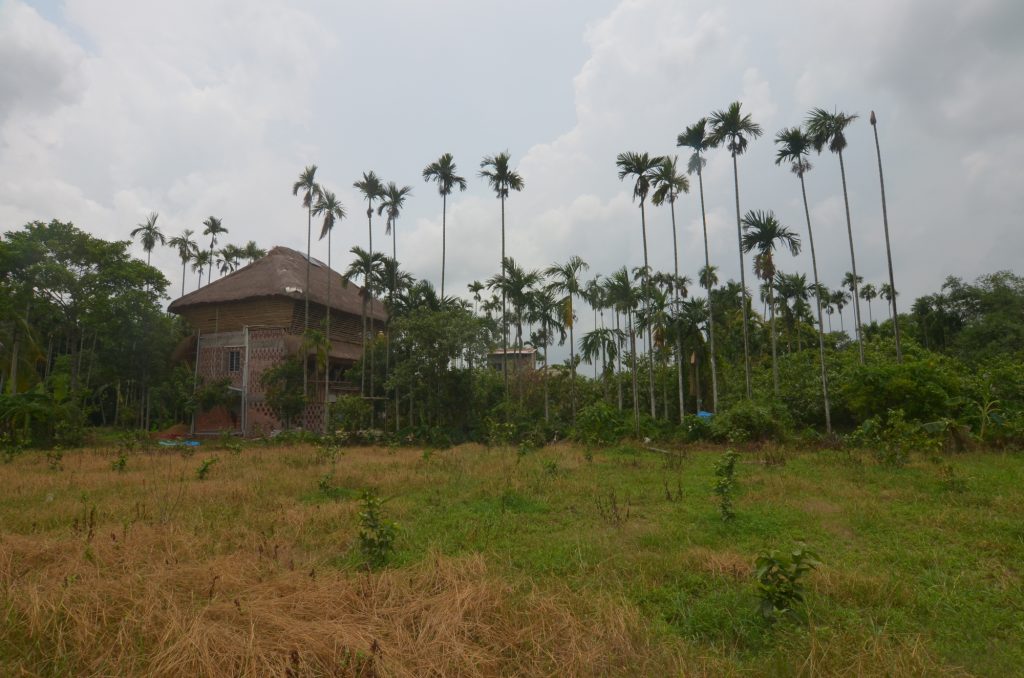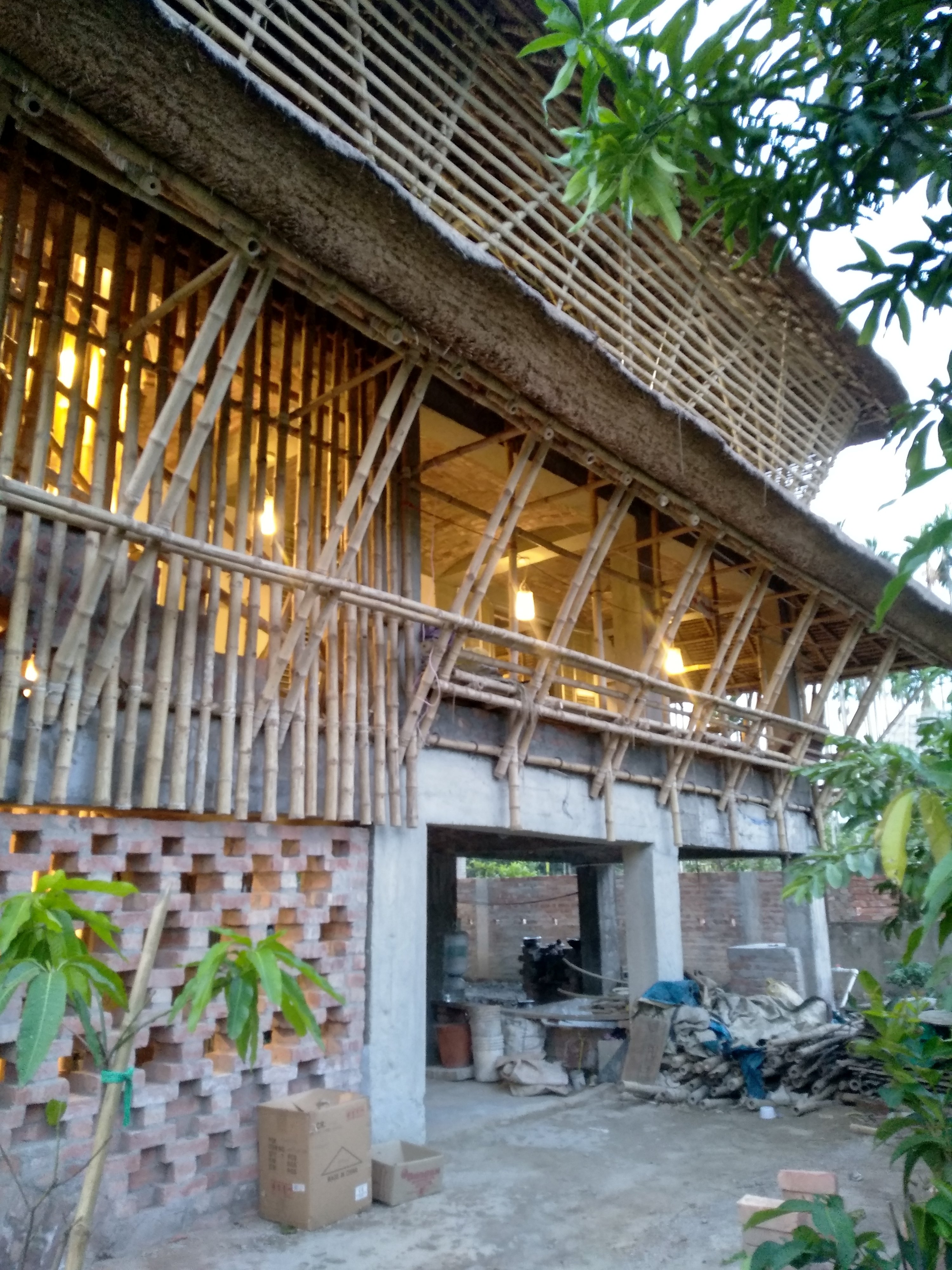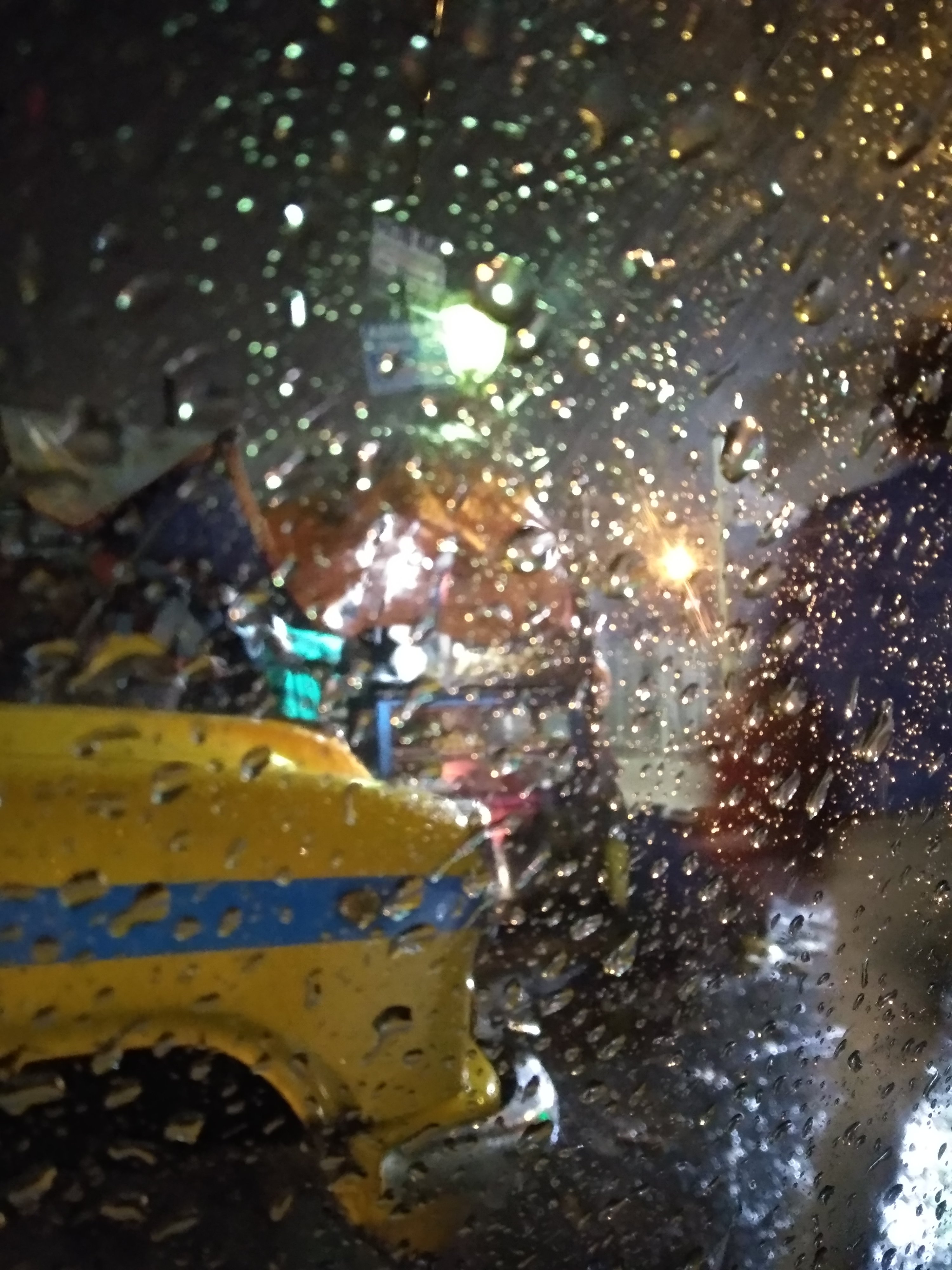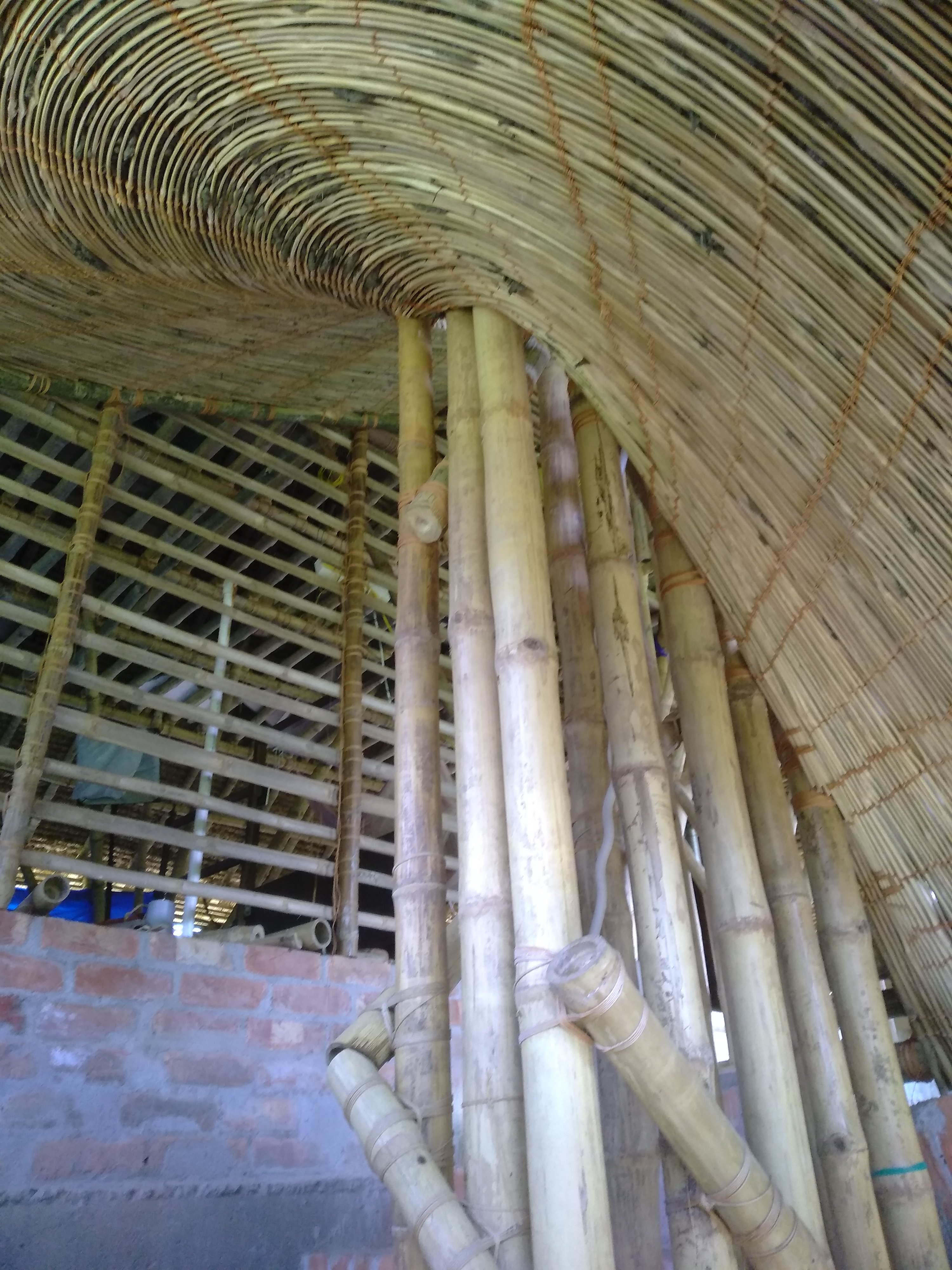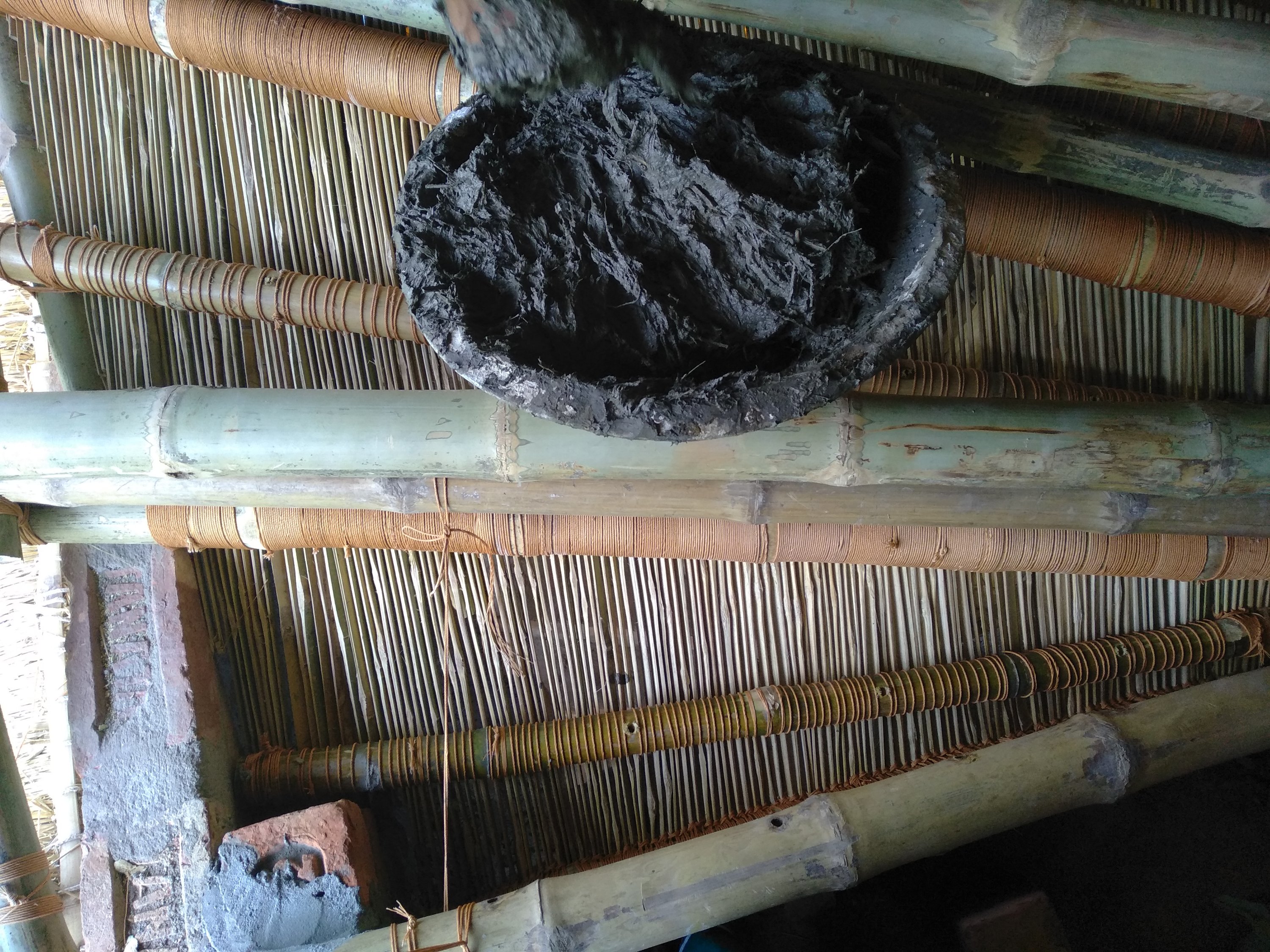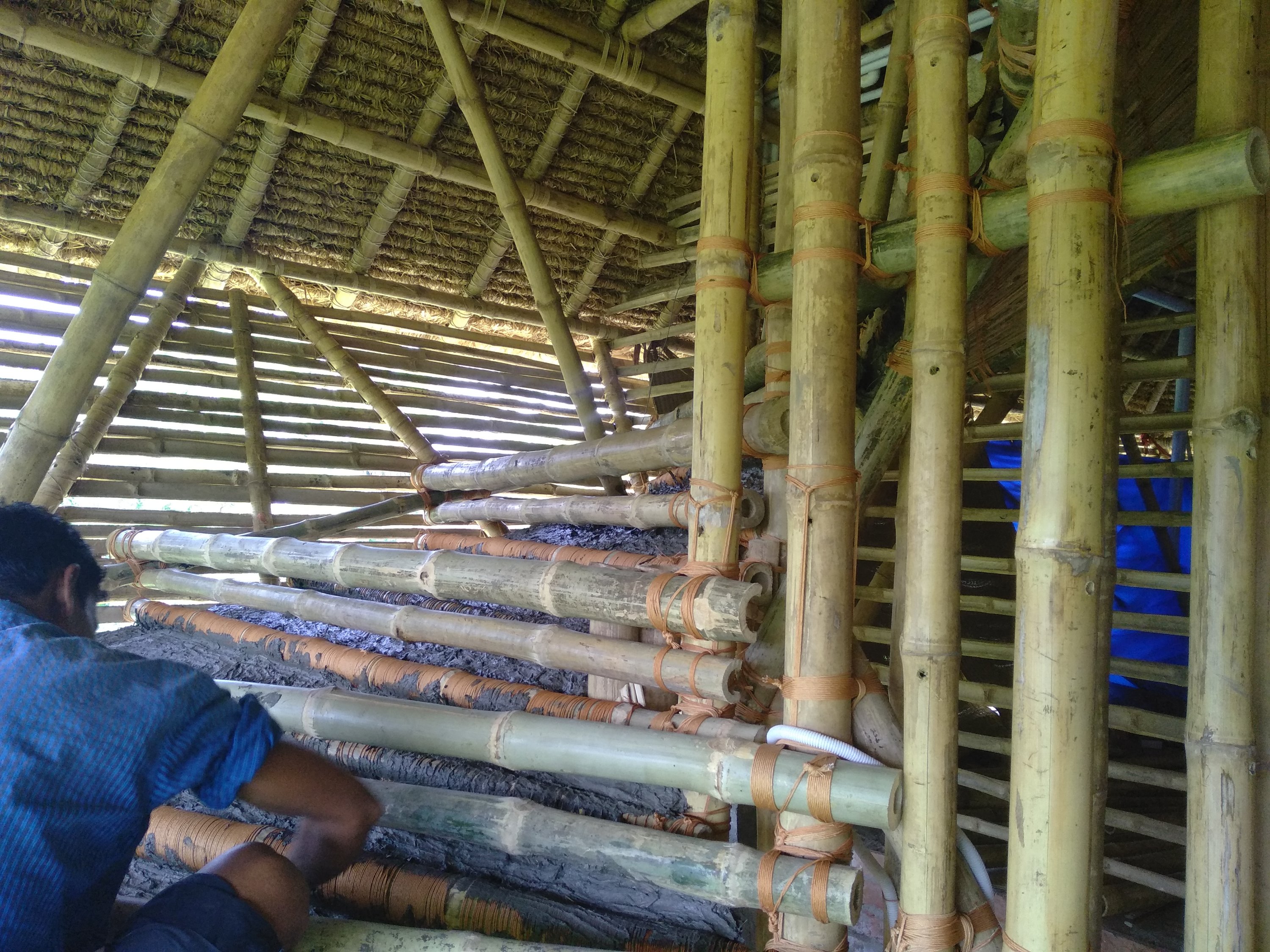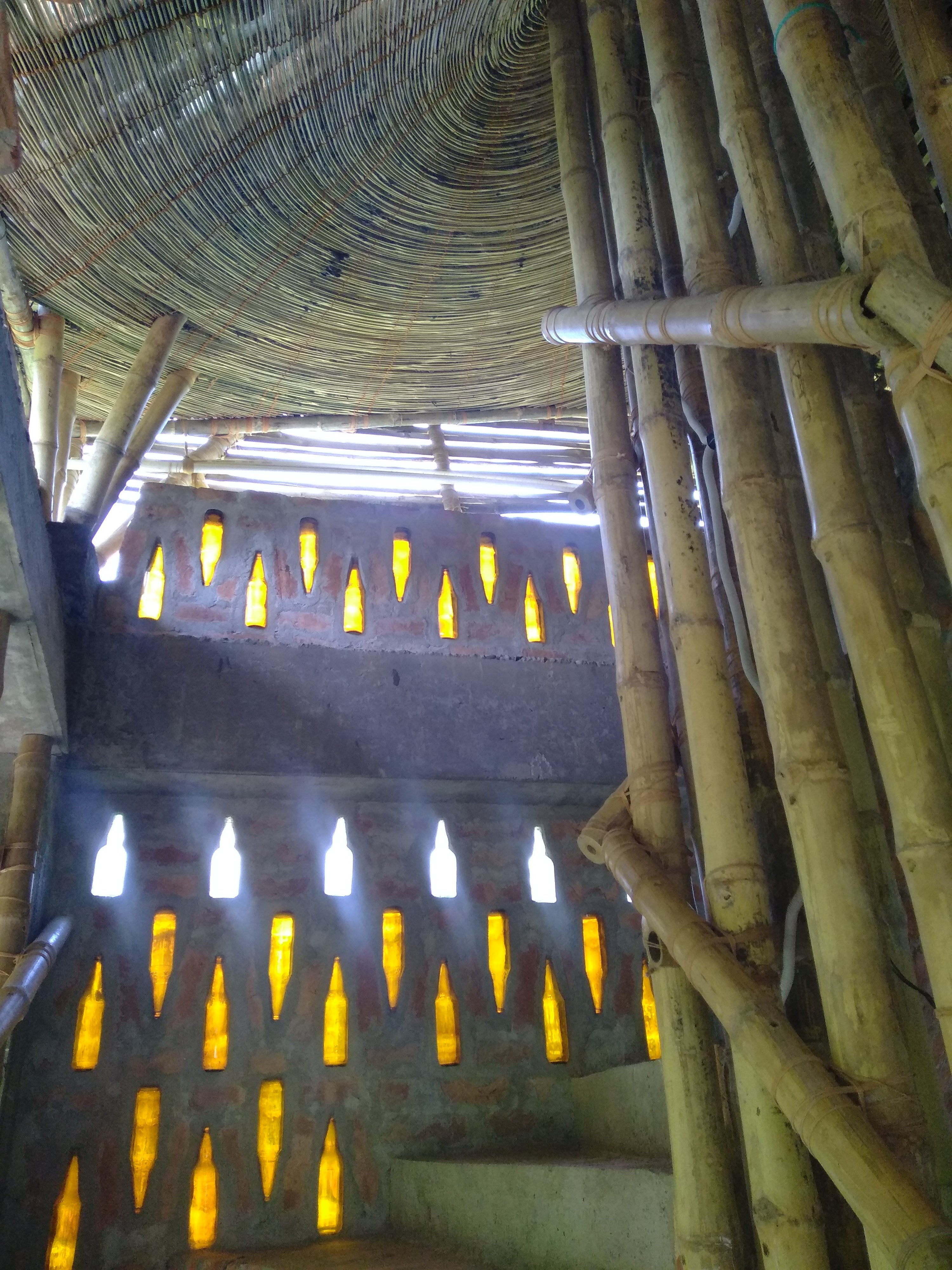So, our roof stood up to the most powerful cyclone that people living in our area had experienced. Our house was directly in line with the cyclone – we even experienced an eye where the wind and rain completely stopped for 30 minutes after which they again began. Winds came entirely from the east, a direction in which we have no natural or constructed protection from the wind.
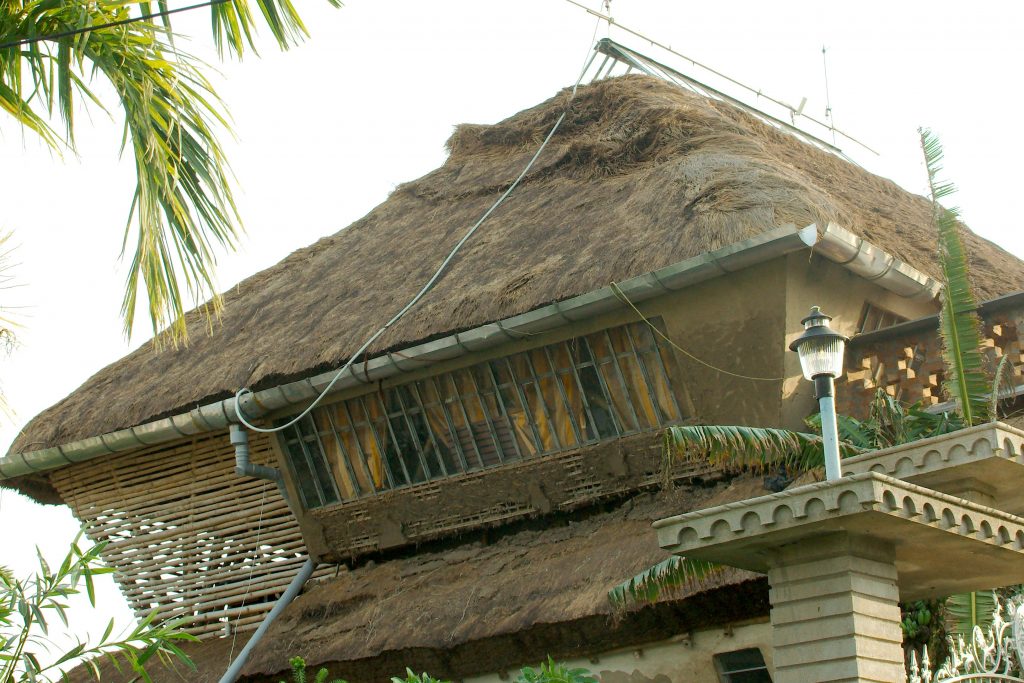
East 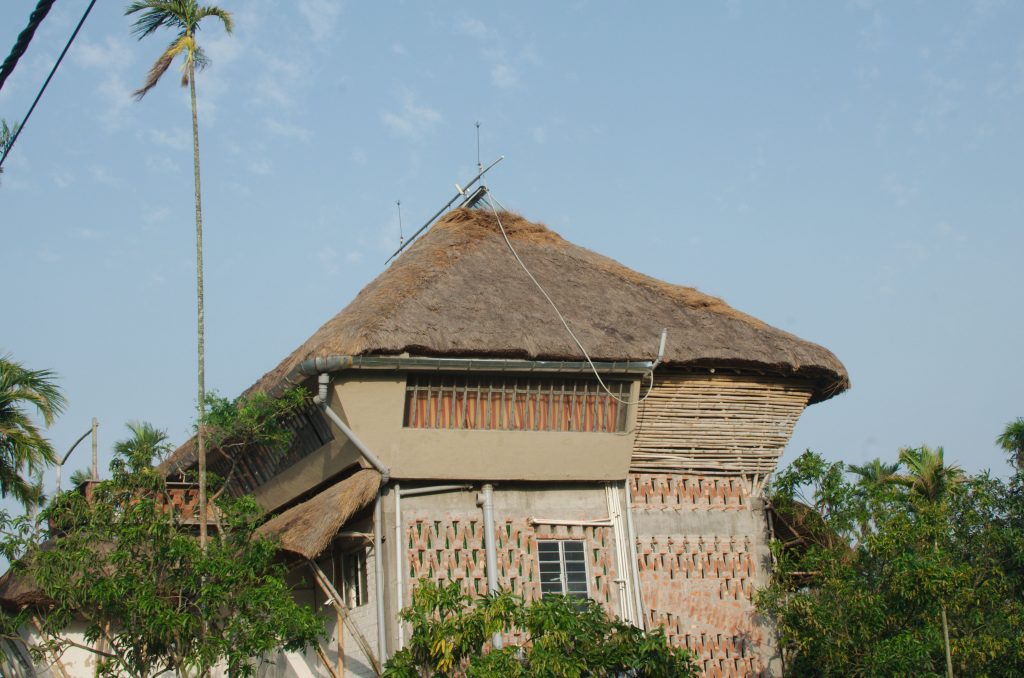
West 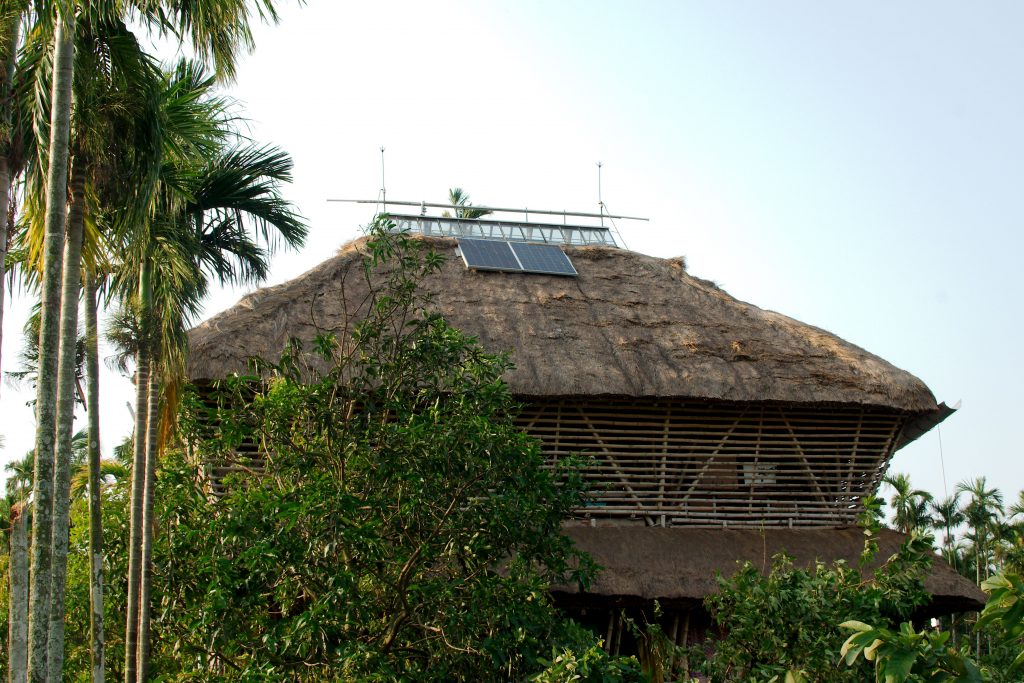
South
As can be seen from the pictures, the roof was a bit tussled but it wasn’t damaged. It also did not leak. This was quite an impressive feat for a roof of straw and bamboo, and we had many people come to see the house expecting major damages. In our area, most houses with tile, tin or asbestos roofs had their roofs damaged and in need of repair. While we do need to repair some of the mud walls, there is no great urgency or cost involved in doing that.
The experience lead me back to thinking about when we made the roof in 2017 with the help of the team from Sundarbans who built our house and Matha Chhaj. The process began with the preparation of roof panels on the ground:
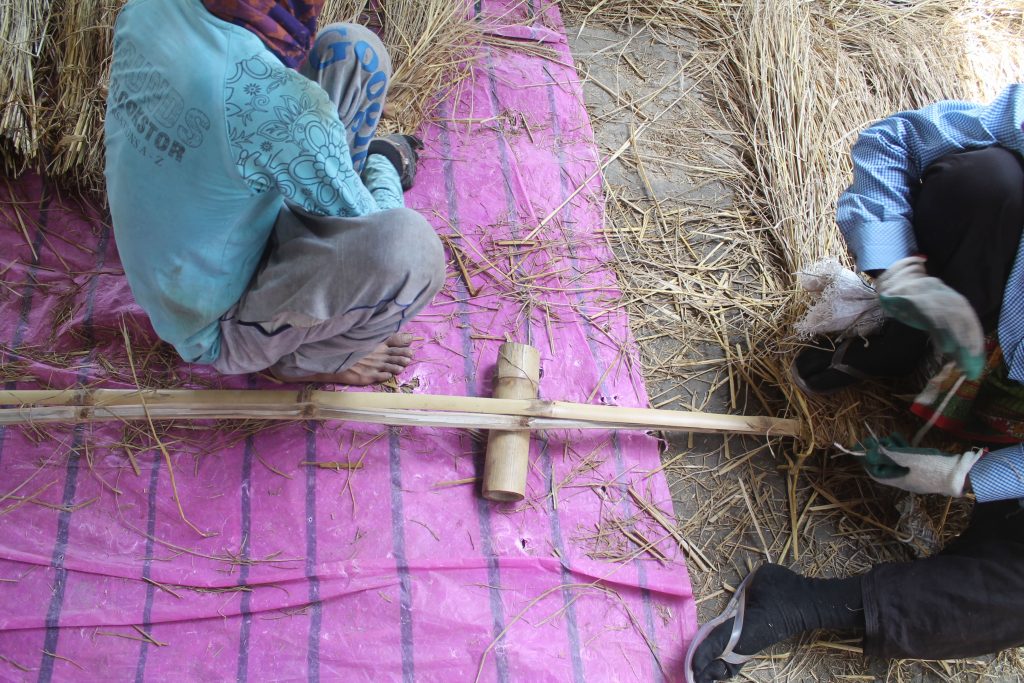
Bamboo battens that the straw is then sandwhich inbetween. 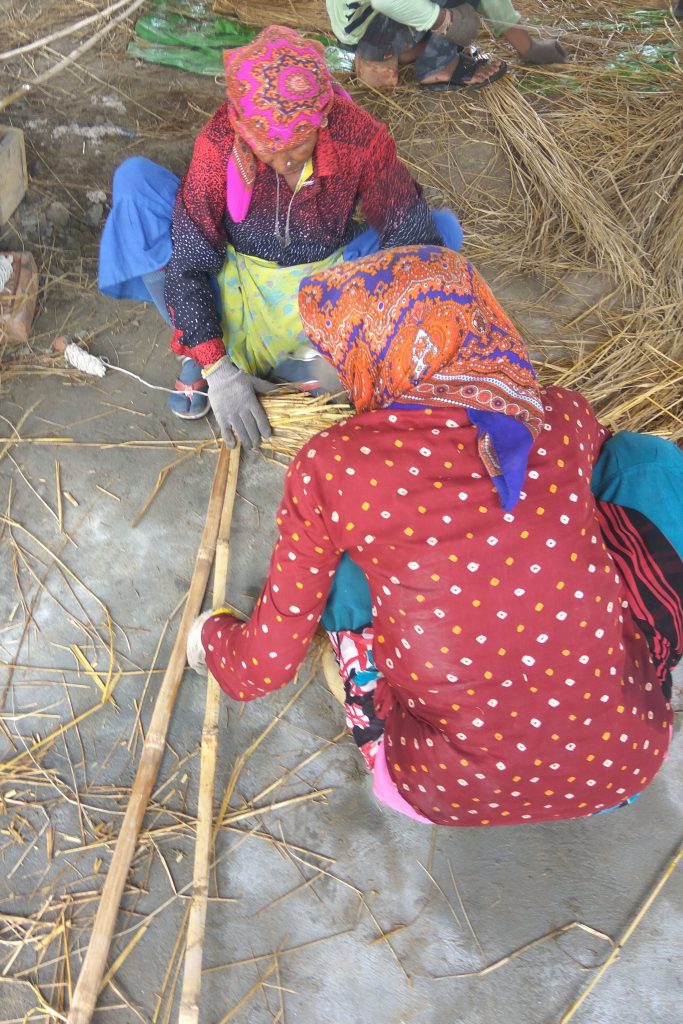
Straw is pushed in between the battens and then tied in place using cotton rope. 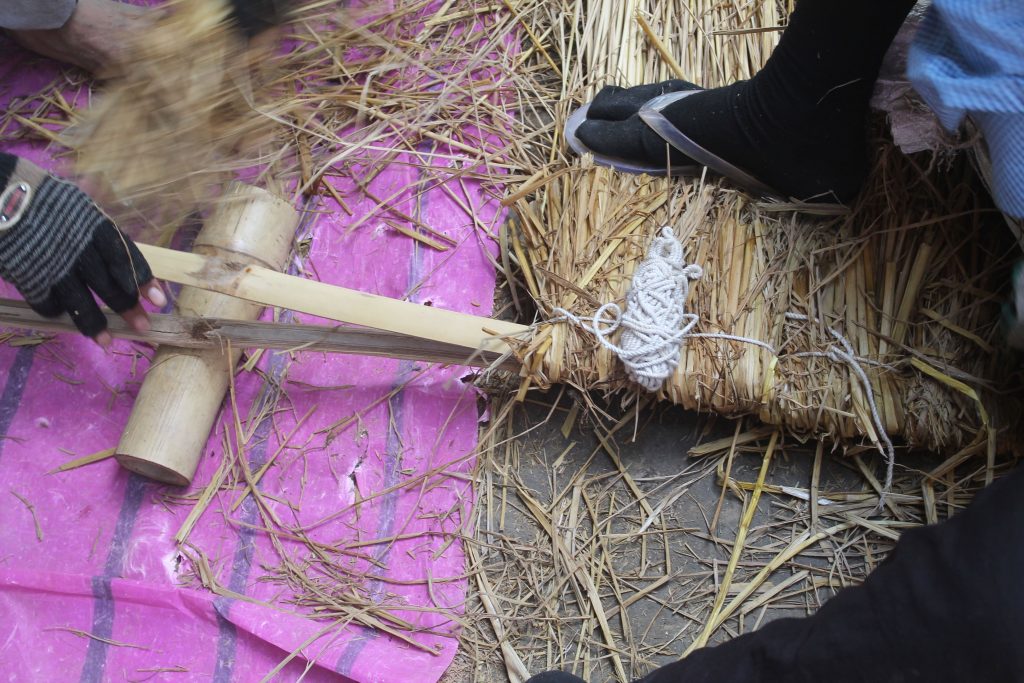
Preparation of panels using two bamboo battens, in between which is sandwhiched the paddy straw. 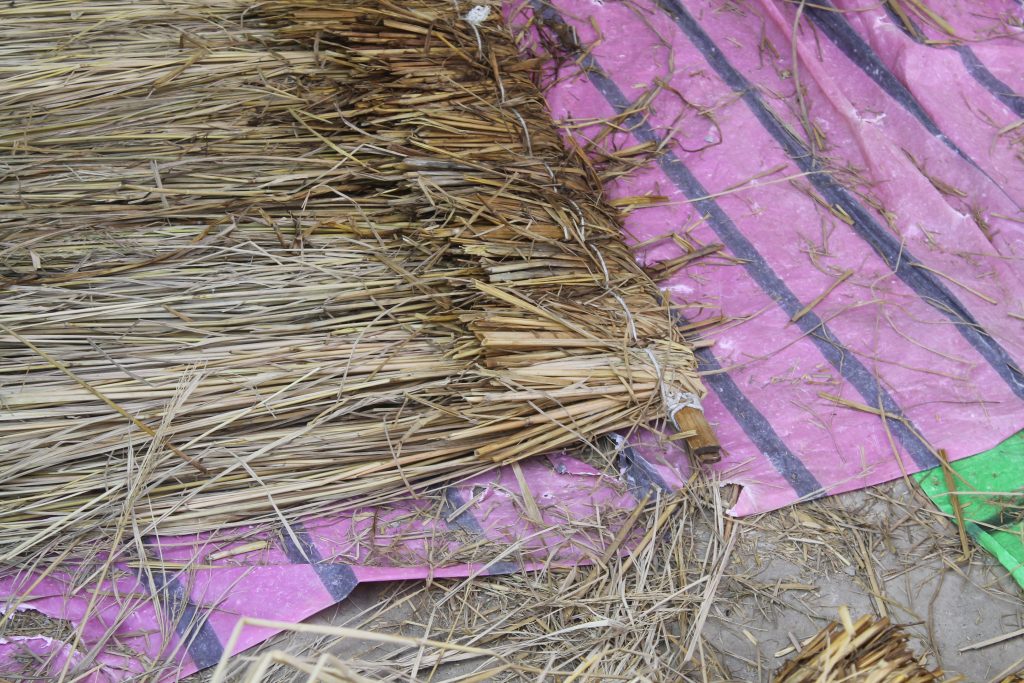
A finished panel where the straw is tied in with the bamboo panels.
There was quite a large amount of panels to be prepared, in total we used about 15 tonnes of straw:
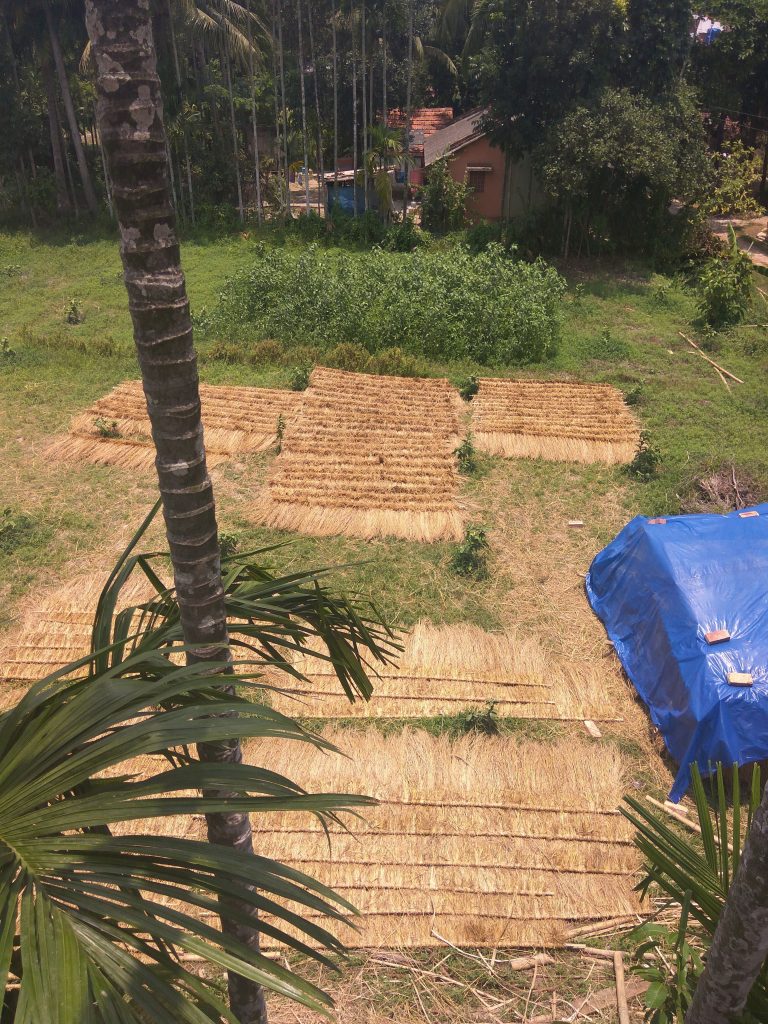
Bamboo Panels prepared on the ground 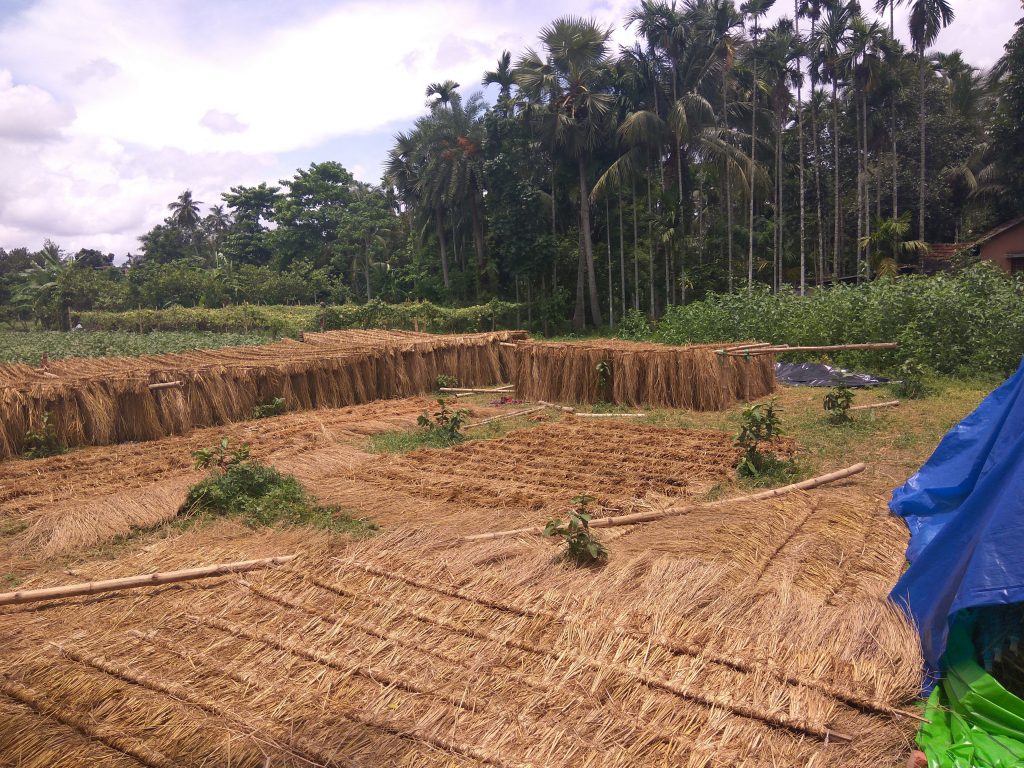
Finally, when the panels were all done, they were lashed using cotton rope on to the bamboo frame of the roof:
The end result is not only beautiful, but also doesn’t heat up the way many other roofing systems do and it’s also – apparently – able to handle winds as strogn as 150-160 kph. Cost-wise, there is considerable labour involved, but the material costs (cotton thread, bamboo battens and straw) is inexpensive and locally available. During the process, our team from Sundarbans learnt the technique so in case anyone in West Bengal want to have a similar roof, I can recommend very skilled artisans that can do it.
